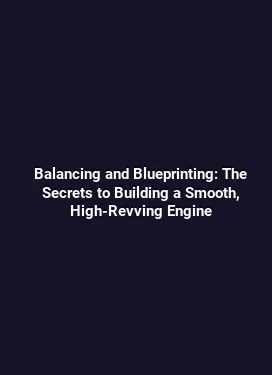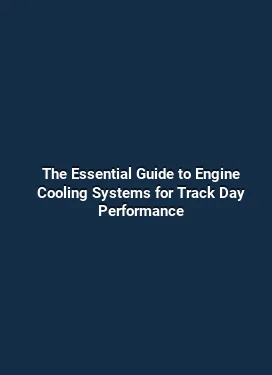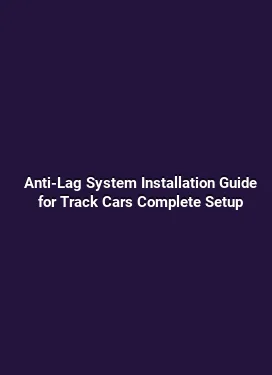Best Budget Turbo Kits Under $2000 for Honda Civic Si 2006-2011
Understanding the Civic Si Engine and Turbo Compatibility

The Honda Civic Si from 2006 to 2011 relies on a modern K-series engine, a robust platform for forced induction when paired with careful supporting upgrades. A budget-friendly turbo kit in this context typically centers around a compact, responsive turbocharger paired with a manifold, intercooler, and a piping harness that routes air cleanly into the intake side. For this era of Civic Si, most builds focus on delivering a practical boost range that remains street-friendly, often in the realm of 5 to 9 psi on pump fuel, with the goal of achieving meaningful gains without stressing the stock long block. Beyond the turbo itself, the installation hinges on several critical factors: a reliable oil supply to the turbo, a return line that drains properly, a well-sized intercooler to keep intake air temperatures in check, and a tune that optimizes air-fuel ratio and ignition timing for the added boost. Engine management, fuel delivery, and ignition control all play a decisive role in both performance and durability. In this space, the emphasis is on robust, real-world results rather than extreme peak numbers, especially given the budget constraint.
From a practical perspective, the K-series family offers strong potential when boosted with a sensible plan. The cylinders and pistons can tolerate modest boost with quality fueling and a conservative tune. This means selecting a kit that includes, at minimum, a turbo, a matched exhaust manifold, piping, an intercooler, an oil feed/return line, a wastegate, and a blow-off valve. The right combination of components, along with a stable fuel system and safe tuning, often yields a reliable daily driver that also delivers satisfying acceleration and a wider torque curve than stock.
What Makes a Budget Turbo Kit Viable for Civic Si
On a sub-$2000 budget, the viability of a turbo kit hinges on holistic design rather than a single flashy component. The best options emphasize compatibility, completeness, and the ability to support a reliable baseline tune. A viable kit should provide a compact turbo that spools quickly, an intercooler with enough core volume to keep intake temperatures reasonable, and everything needed to bolt the system together with minimal guesswork. In addition, a robust kit will include or clearly specify all fittings, clamps, gaskets, and lines required for installation, plus a path to a safe fuel strategy. Value also translates into support and documentation. Kits that come with clear installation instructions, mounting hardware, and warranty coverage, even if modest, tend to pay dividends when the first boost event happens. The reality for budget builds is that some components may be lighter duty than those in high-end setups; awareness of this helps set realistic expectations and informs future upgrades as needed. A well-chosen budget kit will also align with a sensible upgrade path for fueling, ignition, and engine cooling so that the overall package remains coherent from day one to months later.
Top Budget Turbo Kit Options Under $2000
Kit A: CX Racing K-Series Budget Turbo Kit (K20/K24) — All-in-One Package

This type of budget kit from CX Racing focuses on a complete, bolt-on approach designed for K-series engines found in Civic Si models of this era. The core is a compact, responsive turbo paired with a matched exhaust manifold, intercooler, and a dedicated piping assembly that routes intake air efficiently. The kit typically includes oil feed and return lines, a wastegate, and basic hardware for a straightforward install. Price points for these kits often sit within or just above the $1,200 to $1,800 range, depending on the exact inclusions and current market conditions.
Practical considerations for this option center on fueling and tuning. While the kit provides the hardware to generate boost, it is essential to pair it with a fuel pump upgrade and injectors suitable for the target boost level. A professional or well-documented street tune is highly recommended to avoid lean conditions or premature knock. Intercooler sizing is generally adequate for street use, but power-minded drivers should monitor intake temperatures and be prepared for a mid-cycle upgrade if temperatures trend high under sustained boost.
- Included components typically cover turbo, manifold, intercooler, piping, wastegate, oil lines, and generally a blow-off valve.
- Common caveats include the need for fuel system upgrades and a proper tuning solution to hit a safe, reliable target power.
- Manufacturing tolerances and component quality can vary between batches; reading user reviews and asking for current warranty terms is advisable.
Kit B: Forced Induction Budget Turbo Kit for K-Series Civic Si
The Forced Induction approach to a budget kit emphasizes accessibility and a balanced package. These kits typically deliver a similar core as Kit A but may offer alternative compressor profiles and slightly different manifold designs to optimize spool for a street-driven car. The emphasis remains on a complete kit with intercooler, piping, and lines, all designed to be installed with a reasonable amount of mechanical know-how. The price bracket still hovers under the $2000 mark, making this option attractive for enthusiasts who want a simpler path to boost without major investments.
From a reliability standpoint, planning for fuel and ignition support remains essential. A tuned air-fuel map and a capable fuel delivery path are non-negotiable. The kit’s success depends heavily on a dedicated tune that respects the engine’s limits and uses safe boost pressure, especially on pump gas. Intercooler efficiency and charge pipe integrity should also be verified during installation, as boost leaks are a primary cause of underwhelming performance and inconsistent drivability.
- Commonly paired with a modest fuel system upgrade for safe operation at the kit’s target boost.
- Pros include straightforward installation and robust support from vendors in the community.
- Cons may involve limitations in top-end power compared with pricier setups, especially on warmer days or at high altitude.
Kit C: Budget eBay-Listed Complete Kit for K-Series Civic Si
Budget-oriented, off-the-shelf kits sourced from major marketplaces offer a very aggressive price point. The appeal lies in the value proposition: a complete turbo kit that includes the turbo, manifold, intercooler, piping, and lines, often sold for well under $2000. The reality, however, is that these kits vary widely in component quality, fitment, and durability. When considering this option, it’s critical to verify compatibility with the Civic Si’s engine type, ensure that the included intercooler has a reasonable core size, and prepare for a meticulous inspection during installation.
For buyers, the practical path is to budget for additional upgrades and a professional tune. Upgrading the fuel system, such as adding a higher-capacity pump and suitably sized injectors, reduces the risk of a lean condition under boost. Always research seller feedback and warranty policies, and be ready to address fitment issues that sometimes accompany low-cost kits.
- Expect variability in component finish and hardware quality; compatibility checks are essential before installation.
- Budget advantage paired with a need for prudent post-purchase upgrades and a reliable tune.
Kit D: Used or Refurbished Components Kit for Civic Si (Budget-Forward Approach)
For builders who want to stretch dollars, a kit assembled from used or refurbished components can offer value. This approach might combine a lightly used turbo with a fresh manifold, intercooler, and piping from reputable sources. The advantage is obvious: a higher specification kit at a lower initial outlay. The trade-off is increased risk around wear, seals, and potential performance inconsistencies.
When pursuing a used-path kit, perform due diligence: verify compressor and turbine clearances, inspect seals for oil leakage, and confirm that the intercooler and piping show no signs of corrosion or cracking. A comprehensive post-purchase inspection and a controlled break-in can help maximize reliability. Fuel system upgrades and a tuned map remain essential, regardless of the kit’s origin.
- Due diligence on part condition dramatically reduces risk in used-kit builds.
- Expect a more involved installation and potential warranty considerations.
Kit E: DIY Custom Budget Kit Approach (Within Reason)
A DIY budget approach combines available components that fit the K-series layout with careful planning. This route can optimize for spool and response by selecting a compact turbo, a suitably sized intercooler, and a tailored piping path. The key is to maintain a coherent upgrade plan: a fuel system upgrade, a tune, and a robust cooling strategy. While this is a cost-saving option, it requires strong mechanical skills and a clear understanding of engine safety limits. Price-wise, it can stay under the $2000 ceiling, but the total system cost often depends on sourcing and any incidental components needed for a proper fit.
In a DIY scenario, documenting the exact part numbers, installing with methodical care, and validating fuel and ignition maps through a trusted tuner are critical steps. This path emphasizes learning and customization while still delivering a practical boost in daily performance.
- Great potential for a tailored setup, provided there is a solid plan and tuning support.
- Higher risk if components are mismatched or tuning is overlooked.
Supporting Modifications You Need When Budget Is Tight
Boosted engines demand a cohesive supporting system to maintain reliability and performance. Even with a budget-friendly kit, the right ancillary upgrades can make the difference between a fun daily driver and a problematic build. The core areas to consider are fueling, ignition, cooling, and mechanical integrity of the engine and exhaust systems.
Fuel System Upgrades
Most sub-$2000 turbo kits will benefit from increasing fuel delivery capacity. A higher-flow fuel pump is a common starting point, coupled with injectors sized to your target boost. A return-style fuel system helps maintain stable fuel pressure under boost, reducing the risk of lean conditions. If injector sizing is uncertain, a staging approach to upgrades—starting with a pump and a set of injectors that support mild boost—offers a practical path toward reliability and predictable power gains.
Engine Management and Tuning
With turbocharging, engine management becomes the primary gatekeeper of safe performance. Most budget kits require an ECU tune, a piggyback, or a standalone system. The goal is to adjust ignition timing and air-fuel ratio to safe levels for the chosen boost. A professional tune, or at least a trusted tune from a reputable source, helps ensure that the engine responds cleanly and avoids knock. It is wise to provide data logs to the tuner so they can refine fuel maps and ignition timing precisely for the Civic Si’s K-series variant.
Intercooler and Piping
Intercooler efficiency directly affects charge air temperature and detonation resistance. A larger or more efficient intercooler helps keep intake air temperatures down, especially in warmer climates or during spirited driving. If the stock intercooler is retained, monitor intake temperatures and be prepared to upgrade in a subsequent phase. Piping must be snug and well-supported to prevent boost leaks, which can erode performance and spur inconsistent power delivery.
Exhaust, Intake, and Cooling Upgrades
A balanced approach includes exhaust improvements to reduce backpressure and free up flow, accompanied by a clean intake path. Upgrades to the cooling system, including an upgraded radiator or additional cooling fans, contribute to longer component life under boost and help maintain safe engine temperatures during hot track days or extended pulls. Remember that even with a budget kit, attention to aerodynamics and thermal management pays dividends in performance consistency.
Tuning, Safety, and Reliability Considerations
Push-pull dynamics of a turbocharged Civic Si require a careful balance between power, reliability, and drivability. A safe tuning strategy aligns boost pressure, fuel delivery, and ignition timing with the engine’s displacement, compression, and cam profile. Keeping boost on the modest side for the initial baseline tune is a prudent approach. A successful setup avoids aggressive timing curves that can trigger knock or fuel lean-out, which are common risk factors for a budget build.
Reliability hinges on gas mileage-friendly driving habits and monitoring. Regular oil changes with the correct viscosity, oil type, and recommended change interval are essential for turbocharged engines. Checklines for boost control, vacuum integrity, and intercooler connections should become part of routine maintenance. A simple boost leak test during the early phase helps catch issues that could otherwise go unnoticed until the engine is under load.
Real-World Maintenance and Longevity Tips
Keeping a budget turbo setup durable starts with proactive maintenance. Start by ensuring consistent oil pressure to the turbo with a reliable line and a high-quality oil. Boost control hardware—whether wastegate or electronic solenoid—should be verified for leaks and correct operation. Periodic inspection of the intercooler for cracks, the piping for loose clamps, and the turbocharger’s seals helps prevent performance degradation and potential failures. A well-maintained kit tends to deliver stable power over time, with fewer surprises during daily driving or weekend sessions.
Budget vs Long-Term Upgrade Path
Budget-driven projects often begin with a solid foundation that leaves room for incremental upgrades. The initial kit can serve as a springboard toward higher efficiency and reliability when paired with fueling and tuning enhancements. A pragmatic approach is to plan for phased improvements: first solidify fueling and tuning, then consider upgrading to a larger turbo, a more capable intercooler, and a tunable ECU to extract additional horsepower. The long-term strategy should prioritize drivability, reliability, and repeatable performance, ensuring the Civic Si remains a fun and safe daily driver as power goals evolve.
Building a budget turbo system around the Honda Civic Si (2006-2011) is a dance between cost, reliability, and real-world performance. The key is to choose a kit that covers the essentials, plan for the supporting upgrades, and focus on a tune that respects the engine’s limits. With thoughtful selections and careful execution, a sub-$2000 turbo kit can deliver meaningful gains without compromising daily usability.






